Pearl Zhu's Blog, page 1303
August 27, 2016
“Digitizing Boardroom” Book Introduction Chapter 4: An Innovative Board
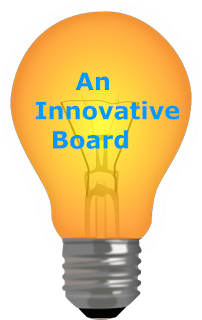 Corporate boards play a crucial role in providing strategy oversights and make sound judgments on and assurance of corporate actions within a framework of practical knowledge. Innovation is one of an important ingredients of the business strategy, which role should BoDs play in both management innovation and innovation management? Or the first step first, how to innovate the boardroom?
Corporate boards play a crucial role in providing strategy oversights and make sound judgments on and assurance of corporate actions within a framework of practical knowledge. Innovation is one of an important ingredients of the business strategy, which role should BoDs play in both management innovation and innovation management? Or the first step first, how to innovate the boardroom?
Innovation is absolutely a mindset: Boards as top leadership teams should participate or even lead in the area of both innovation management and management innovation. Although the major responsibility of Board is for practicing governance, which doesn’t mean to stifle innovation, on the opposite, it means to set principles and build the right framework for managing innovation in an effective way. An innovative board brings the outliers’ fresh eyes and tremendous set of skills and experience mix to create new value. One important role the Board must play in making sure management reports on whether and how investments in innovation are yielding forecast results. Whether it is a major IT project, launching a product, or reshaping culture, assuring excellence in predicting and tracking results falls in the domain of anyone with fiduciary responsibility.
Innovation should be embedded in every aspect of the organization, including strategy: Innovation is what leads to differentiation. There are many ways to differentiate, and therefore, there are many way to build innovation into a corporate strategy. A good strategy will include where the company plans to focus its innovation efforts such as product performance, cost effectiveness, speed, business model, etc., and how this links to the rest of the corporate goals and action plan must be put in place to achieve the innovation goals. The board should ask how the enterprise measures innovation and how it compares to “Best in Class” performance and be sure the measurement are accurate from the eyes of the customers and their constituencies.
 Innovation needs the certain level of guidelines and rules: Digital brings both unprecedented opportunities and risks to the businesses today. Every innovation pursuit has risks in it. Therefore, it is important to set guidelines for managing innovation risks in a structural way. BoDs can make the proper policies to encourage innovation, as well as manage risks. It requires acknowledgement, involvement, and commitment. The principles and guidelines help to further frame processes, measures, and control.
Innovation needs the certain level of guidelines and rules: Digital brings both unprecedented opportunities and risks to the businesses today. Every innovation pursuit has risks in it. Therefore, it is important to set guidelines for managing innovation risks in a structural way. BoDs can make the proper policies to encourage innovation, as well as manage risks. It requires acknowledgement, involvement, and commitment. The principles and guidelines help to further frame processes, measures, and control. Innovation is too important to leave solely in the hands of the management team without any oversight or guidance. Innovation Governance needs to advocate, steer, and sustain innovation. Digital directorship must be extremely visionary, mindful, creative empathetic, generous, conscious, passionate, and humble. Modern BoDs are also innovators who can breaking down the old rules, and build new rules to inspire businesses step into the new chapter of innovation blossoms.Follow us at: @Pearl_Zhu
Published on August 27, 2016 23:45
Three Tipping Points of Change Management
 Change is inevitable, and the speed of change is increasing. However, change is difficult, more than two thirds of change efforts fail to achieve the expected results. What’s the tipping point of Change Management in your organizations? How to ride above the learning curve and manage changes effectively?
Change is inevitable, and the speed of change is increasing. However, change is difficult, more than two thirds of change efforts fail to achieve the expected results. What’s the tipping point of Change Management in your organizations? How to ride above the learning curve and manage changes effectively?
Change starts with a "sense of urgency" which can only come from top management: Change Management is all about balancing the following main elements impacting change such as people, strategy, process and IT. When strategy management gets stuck to go nowhere, people do not feel engaged, processes are overly rigid, technology is outdated. It is the time for changes. The good moment to change is when the top senses the urgency and the bottom feel the pain, and change inertia is minimized via common understanding about the necessity and imperatives of changes. A good idea or culture cannot be developed by persons at the bottom or middle if it is not supported by the Top Management. The commitment of top management is very important for any change to be successful. However, you can control people's behaviors, but you can't manipulate how they think. The degree of explicit control that management exerts, or can exert on the individuals is limited. To get cooperation and not cause problems, you need to find a way to show people that the changes being made are really in their best interests and will make their works easier.
Static mind, inertial attitude or poor behaviors are the signs for changes: When strategy management gets stagnant due to culture inertia, it is the right timing to change. Trace down the poor behaviors or lower-than-expected performance, understand the causes behind it. The right culture is a prerequisite foundation for implementing the strategy. Culture precedes strategy. Weak cultures rely on a bureaucracy to enforce rules and regulations that undermine an organization's speed, simplicity, and competitiveness. Change is not for its own sake, focus on the business purpose behind it. Often culture is the very reason for the change, it is also an important factor to lead change success. What underpins the change process and methodology is the genuine valuing of people. When people feel valued they contribute significantly. When senior management allows ineffective project/program management practices to become the norm, people at all levels often become complacent and ineffective. After all, most people have come to believe it's easier and safer to adapt to a culture rather than promote or initiate change. Hence, set principles and good policies to encourage changes and reward change agents.
 Measure is a good starting point to change: Change becomes necessary when an organization fails to meet its performance goals, probably as a result of behavior following a path of self-interest. Change Management is necessary and challenging when you diagnose the following symptoms, and perhaps measures are good starting point to change: People's behavior usually responds to how they are measured. When people start playing with system, and low hanging fruits get picked without long term perspective, quantity over quality, always doing things in the same way, lack of creativity, compete negatively with silo thinking. Does this mean that you are applying the wrong measures at a personal and group level? The problem is actually more complex. Often the systems are rigid and slower to adapt. Workflows and business processes are based on old measures and well aligned with them, are even more resistant to change. When starting the change process, perhaps measures are a good place to start change.
Measure is a good starting point to change: Change becomes necessary when an organization fails to meet its performance goals, probably as a result of behavior following a path of self-interest. Change Management is necessary and challenging when you diagnose the following symptoms, and perhaps measures are good starting point to change: People's behavior usually responds to how they are measured. When people start playing with system, and low hanging fruits get picked without long term perspective, quantity over quality, always doing things in the same way, lack of creativity, compete negatively with silo thinking. Does this mean that you are applying the wrong measures at a personal and group level? The problem is actually more complex. Often the systems are rigid and slower to adapt. Workflows and business processes are based on old measures and well aligned with them, are even more resistant to change. When starting the change process, perhaps measures are a good place to start change.
There are too many different types of change management initiatives, so there is no one size fits all approach to managing changes successfully. But a good starting point for change will make the journey meaningful and fulfilling.
Follow us at: @Pearl_Zhu
Published on August 27, 2016 23:42
August 26, 2016
The CIO’s Digital Agenda: Running IT as a Change Organization Aug. 2016
 IT is the foundation of data, information, and modern knowledge. The biggest misnomer regarding IT is that it is "just technology." Digital is about the rapidly change and continuous business flow, and IT becomes a changing organization to driving business transformation. How to fine tune IT to become a change agent and get the business digital ready?
IT is the foundation of data, information, and modern knowledge. The biggest misnomer regarding IT is that it is "just technology." Digital is about the rapidly change and continuous business flow, and IT becomes a changing organization to driving business transformation. How to fine tune IT to become a change agent and get the business digital ready?
Running IT as a Change Organization How to Run IT as a Changing Organization: For forward-looking and highly mature organizations, the IT department has become synonymous with the change department: In order to make effective changes, you have to know the underneath structure and processes of your business, because they underpin digital capabilities of the organization. How do you make changes to anything without knowing all the parts and how they are related?Running IT as Digital Catalyzer? IT is on the big shift to transform from a cost center to a business value creator, from a help desk to a growth engine; IT should devote more attention to what organizations really care about - managing information to capture insight and foresight, putting technology to business advantage. However, there is the gap between the aspirations of what IT could do to the business versus what the current IT “mentality” and capability within the respective IT department is capable of providing and enabling. How can IT close communication and capability gaps, and what is the focal point to run IT as the digital catalyzer and improve its effectiveness, agility, and innovativeness?
 Is IT Organization as Responsive as it needs to Be? Without a doubt, IT is the most difficult and challenging part of a company due to its change nature. Nowadays, information is the lifeblood of an organization, and technology is more often the innovation driver. And the speed of change is accelerated at the digital age. So is your IT organization as responsive as it needs to be? What does the digital shift mean to IT organizations. A Change Agent IT? With the emerging technological trends such as SMAC (Social, Mobile, Analytics, and Cloud) and IT consumerization & Internet of the Things, more often than not, IT plays a significant role in driving business changes, and leading organizations' digital transformation. Because the digital transformation is driven by technology; and not just by technology, but by user-driven technology. Sure, in today's world, technology is driving business transformation, unlike previous eras during which business transformation was driven by business ideas. This is a golden opportunity for CIOs to lead the way by enabling, governing and optimizing the consumer-driven technology that's going viral in the enterprise. But how to run IT as a change agent for business transformation. Here comes both opportunities and responsibility.Running IT as a Digital Transformer: We live in a fast-paced digital world, and every day more and more technologies affect the way we live, think, and love. Great opportunities, pitfalls, and disruptions are around every corner. Digital transformation is inevitable, transformation means to change the "nature" of something, albeit that the increasing pace of technological advances has clearly impacted the nature and scope of opportunities or disruptions. Hence, IT has become mission critical, it is imperative for IT and business leaders to work effectively and efficiently together to ensure that they are leveraging IT across their organizations to attain enterprise-wide transformation; not just using IT as a digital extension, but running IT as a digital transformer.
Is IT Organization as Responsive as it needs to Be? Without a doubt, IT is the most difficult and challenging part of a company due to its change nature. Nowadays, information is the lifeblood of an organization, and technology is more often the innovation driver. And the speed of change is accelerated at the digital age. So is your IT organization as responsive as it needs to be? What does the digital shift mean to IT organizations. A Change Agent IT? With the emerging technological trends such as SMAC (Social, Mobile, Analytics, and Cloud) and IT consumerization & Internet of the Things, more often than not, IT plays a significant role in driving business changes, and leading organizations' digital transformation. Because the digital transformation is driven by technology; and not just by technology, but by user-driven technology. Sure, in today's world, technology is driving business transformation, unlike previous eras during which business transformation was driven by business ideas. This is a golden opportunity for CIOs to lead the way by enabling, governing and optimizing the consumer-driven technology that's going viral in the enterprise. But how to run IT as a change agent for business transformation. Here comes both opportunities and responsibility.Running IT as a Digital Transformer: We live in a fast-paced digital world, and every day more and more technologies affect the way we live, think, and love. Great opportunities, pitfalls, and disruptions are around every corner. Digital transformation is inevitable, transformation means to change the "nature" of something, albeit that the increasing pace of technological advances has clearly impacted the nature and scope of opportunities or disruptions. Hence, IT has become mission critical, it is imperative for IT and business leaders to work effectively and efficiently together to ensure that they are leveraging IT across their organizations to attain enterprise-wide transformation; not just using IT as a digital extension, but running IT as a digital transformer.The “Future of CIO” Blog has reached 1.5 million page views with 3000+ blog posting in 59+ different categories of leadership, management, strategy, digitalization, change/talent, etc. blog posting. The content richness is not for its own sake, but to convey the vision and share the wisdom. Blogging is not about writing, but about thinking and innovating the new ideas; it’s not just about WHAT to say, but about WHY to say, and HOW to say it. It reflects the color and shade of your thought patterns, and it indicates the peaks and curves of your thinking waves. Unlike pure entertainment, quality and professional content takes time for digesting, contemplation and engaging, and therefore, it takes time to attract the "hungry minds" and the "deep souls." It’s the journey to amplify diverse voices and deepen digital footprints, and it's the way to harness your innovative spirit.
Follow us at: @Pearl_Zhu
Published on August 26, 2016 23:37
“Digitizing Boardroom” Book Introduction Chapter 3: A Performance-Driven Board
 Corporate Performance Management has many descriptors and understanding in multifaceted way. All performance is directly related to the decisions your people make every day - from executives to the frontline, across functional areas and geographical regions. Performance are not just numbers with metrics, they are numbers in context, results related to your GOALs. The BoDs play important roles in setting principles for improving performance management effectiveness, and monitoring business performance smoothly. However, many directors think that the role of the director is conformance. The boardroom debate could be: Conformance vs. Performance, which is more important for the Corporate Board?
Corporate Performance Management has many descriptors and understanding in multifaceted way. All performance is directly related to the decisions your people make every day - from executives to the frontline, across functional areas and geographical regions. Performance are not just numbers with metrics, they are numbers in context, results related to your GOALs. The BoDs play important roles in setting principles for improving performance management effectiveness, and monitoring business performance smoothly. However, many directors think that the role of the director is conformance. The boardroom debate could be: Conformance vs. Performance, which is more important for the Corporate Board?
Both performance and conformance are important: Boards need to perform and conform at the same time. Because conformance without performance adds very little to the firm value, and performance without conformance is not genuine and sustainable. Compliance is the management discipline of designing and implementing effective steps to ensure that the company actually complies with the regulations relating to its operations. Conformance is about the bottom line of “Keep the Lights On,” and performance is about business growth and achievement. More specifically, the Board’s role, in large part, is to make good decisions that enhance the value creation for the organization, they need to focus on their own performance as well as the performance of the management team, and that performance is not limited to financial performance only, but also to the firm’s performance in creating value for employees and customers. Hence, conformance is critical, but there’s no doubt that the board only fulfills its role to shareholders and the management team when it is focused on performance.
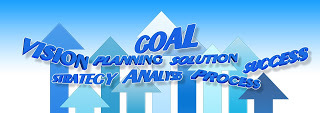 Running a performance-driven Board in a proactive way: A proactive board is more engaged in overseeing the dynamic digital strategy-execution continuum. The Board has to have a good understanding of the organization’s strategic direction and its strategic alternatives. The Board needs to be engaged at the most senior levels to help influence and shape the business of the future. The real BoDs dilemma is that driving the business forward is extremely difficult. This means looking into an unknown future and attempting to define the landscape with its risks and opportunities. It also means taking control of the softer issues such as setting policy, strategic thinking, setting risk appetite, etc. Boards need to make laser-focused performance driven agenda: At the majority of the time, the board agenda should be focused on the progress toward the goals, targets, schedules., etc. of the value maximization plan. Further, much of the process or deep discussions around the progress is the process that facilitates high level management accountability.
Running a performance-driven Board in a proactive way: A proactive board is more engaged in overseeing the dynamic digital strategy-execution continuum. The Board has to have a good understanding of the organization’s strategic direction and its strategic alternatives. The Board needs to be engaged at the most senior levels to help influence and shape the business of the future. The real BoDs dilemma is that driving the business forward is extremely difficult. This means looking into an unknown future and attempting to define the landscape with its risks and opportunities. It also means taking control of the softer issues such as setting policy, strategic thinking, setting risk appetite, etc. Boards need to make laser-focused performance driven agenda: At the majority of the time, the board agenda should be focused on the progress toward the goals, targets, schedules., etc. of the value maximization plan. Further, much of the process or deep discussions around the progress is the process that facilitates high level management accountability.
The Board Time-Management capability: The boards have to spread their limited time on many important things, and they need to have superior time management skills. It is an almost universal finding that the Boards spend too much time on compliance or operational issues at the expense of the future. Most Boards perhaps find hard to focus on on performance, because it deals with a lot of uncertainty and unknown. Ideally, some suggest Boards should spend 20% of their time in the past (compliance), 20% in the present (Operational and tactical), and 60% in the future (performance and potential) This is challenging, but the board effectiveness is dependent on how it can direct the business forward with adequate control and balance them just right.
Modern “Boardship” is both art and science, With the rapid changes and explosive information, the digital board needs to be performance-driven in a proactive way, business strategy, performance, human capital, culture changes are all frequent topics at the board room to practice digital leadership cohesively. Follow us at: @Pearl_Zhu
Published on August 26, 2016 23:31
CIOs as “Chief Information Officer”: How to Unleash the Full Potential of Information
 Digital is the age of information abundance. Forward-thinking IT organizations are shifting from “Technology driven to “I” information oriented. The most powerful and differentiating tool in all of the today's businesses is INFORMATION and that, is provided by IT systems. The aim of modern Information Management has often been described as getting the right information to the right person, in the right format and medium, at the right time, in order to make effective decisions. The value of information is qualitative, measurable, and defined uniquely to an organization. If done well, information can unleash the business’s full potential and maximize its value. On the flip side, information is also something that can hinder the achievement of strategic objectives, having it unavailable or compromised. Therefore, Information Management is one of the most important management disciples and best practices in digital organization. So going back to fundamental, CIOs as “Chief Information Officer”: How to unleash the full potential of IT.
Digital is the age of information abundance. Forward-thinking IT organizations are shifting from “Technology driven to “I” information oriented. The most powerful and differentiating tool in all of the today's businesses is INFORMATION and that, is provided by IT systems. The aim of modern Information Management has often been described as getting the right information to the right person, in the right format and medium, at the right time, in order to make effective decisions. The value of information is qualitative, measurable, and defined uniquely to an organization. If done well, information can unleash the business’s full potential and maximize its value. On the flip side, information is also something that can hinder the achievement of strategic objectives, having it unavailable or compromised. Therefore, Information Management is one of the most important management disciples and best practices in digital organization. So going back to fundamental, CIOs as “Chief Information Officer”: How to unleash the full potential of IT.
Strengthen common Information Management weakness: The majority of IT organizations still get stuck at the lower level of maturity, because they react to the business’s request, lack of the long term strategy to deal with information management life cycle effectively and proactively. Information management entails organizing, retrieving, acquiring, securing, maintaining, updating, distributing, sharing, publishing and finally archiving information. CIOs as IT leadership should identify the common Information Management weakness via making comprehensive assessment. The problems most organizations have are (1) Do not understand what raw material they have to play with poor or lack of information management skills (2) Do not applying worthwhile evaluation to it to reveal the inherent value and catch business insight, but mostly (3) Do not understand why they should do these things in the first place, due the gaps between IT and business, or silo thinking, or lack of a clear strategy on how to diagnose the problems, and set the plans to strengthen the weakness and improving overall IT agility.
Information Potential directly impacts business's potential of organization: Information does not live alone but permeates to everywhere in the businesses, thus, the value of information is not isolated. The art and science of information management are to optimize its usage and achieve its value and full potential. IT as the steward of the business’s information, plays an important role in running a smart business. Potential value all depends on how the information will be used again in the future and this is often exceptionally uncertain. IT should first work to identify how information is associated with the valued tangibles of businesses; products and resources; like information flows in processes for example, then its own value will become readily apparent and quantifiable by association. Information may never be used again or it may be used multiple times. Unless you can predict how it might be used again for tangible gain, it is difficult to say what, if any, potential value..The effort of valuing information independent of its association to the value of related tangibles seems a difficult, if not futile, exercise. Perhaps we
 The key principles to ensure that Information Management activities are effective and successful: Information Management is the overall process of aligning the use of information through the MANAGEMENT (What data you have, in what format and the location & method it is held?), ASSURANCE (Accessibility, reliability, etc.) and EXPLOITATION (Collaboratively enabled and fully support the business objectives). More specifically, IT leaders should set principles to ensure information is managed effectively:-recognize (and manage) complexity- focus on adoption- deliver tangible & visible benefits- prioritize according to business needs-take a journey of a thousand steps-provide strong leadership -mitigate risks- communicate extensively- aim to deliver a seamless user experience- choose the first project very carefully
The key principles to ensure that Information Management activities are effective and successful: Information Management is the overall process of aligning the use of information through the MANAGEMENT (What data you have, in what format and the location & method it is held?), ASSURANCE (Accessibility, reliability, etc.) and EXPLOITATION (Collaboratively enabled and fully support the business objectives). More specifically, IT leaders should set principles to ensure information is managed effectively:-recognize (and manage) complexity- focus on adoption- deliver tangible & visible benefits- prioritize according to business needs-take a journey of a thousand steps-provide strong leadership -mitigate risks- communicate extensively- aim to deliver a seamless user experience- choose the first project very carefully
Digital CIOs need to leverage holistic thinking in managing information and unleashing its full business potential. The level of "silo” in many organizations remains far too high. But that does ensure that those CIOs with the ability to break down organizational silos bring real added value to the enterprise... Given the value that information is playing in the innovation and growth of organizations today, back to fundamental, CIOs are information stewards to run a high-intelligent and high performing business.
Follow us at: @Pearl_Zhu
Published on August 26, 2016 23:27
August 25, 2016
The Weekly Insight of the “Future of CIO” 8/26/2016
 The “Future of CIO” Blog has reached 1.5 million page views with 3000+ blog posting in 59+ different categories of leadership, management, strategy, digitalization, change/talent, etc. The content richness is not for its own sake, but to convey the vision and share the wisdom. Here is the weekly insight about digital leadership, IT Management, and Talent Management.
The “Future of CIO” Blog has reached 1.5 million page views with 3000+ blog posting in 59+ different categories of leadership, management, strategy, digitalization, change/talent, etc. The content richness is not for its own sake, but to convey the vision and share the wisdom. Here is the weekly insight about digital leadership, IT Management, and Talent Management.
The Weekly Insight of the “Future of CIO” 8/26/2016 CIOs’ Q&A for IT Digital Transformation? Nowadays information is overloading and technologies are permeating into every corner of the organization. IT plays a significant role in business growth and innovation. However, in reality, the majority of IT organizations still get stuck at the lower level of IT maturity with the reputation as a back-office support function and cost center only. CIOs as business strategists and senior executives, which questions should you self-diagnose or ask around (business, customers, employees, etc.) in order to improve IT agility and maturity?
Digitizing Boardroom: The multifaceted Aspects of Digital-Ready Boards” Book Chapter 1 Introduction Slideshare Presentation: The contemporary corporate boards play important roles in strategy advising, governance oversight, leadership exemplify, culture tuning, and talent management influence. BoDs also have to shift from the industrial mentalities to the digital styles. A professional digital board is not only about filling with cool-headed, high-professional and high-intelligent BoDs, but also about tuning the structured process to digitize itself, optimize decision-making capacity, inspire innovation, and improve the board's overall effectiveness, agility, and maturity.
Three Qualities of Change Leaders: Fundamentally leadership is about change and influencing people to change. Leadership is moving you and others, and evolving to what is needed next. The speed of change is accelerating, Change Leadership becomes a more critical capacity to influence others through inspiration, motivated by a passion, birthed by a conviction of a sense of purpose of why you were created. Leadership is all about the ability to take initiative and the ability to influence with or without authority. It is the power of example that frees people to do willingly and well that needs to be done. What are important qualities in change leadership? Three Principles to Follow for Bridging IT-Business Gaps: We live in the world with both “old” and “new,” embracing digital is inevitable as that is now part of the reality. In order to lead change and drive digital transformation, IT should combine the old way to do things, and the new way to explore, the next practices and the best practices, take the balance of traditional hierarchy and flatter structure; keep the lights on,” and “doing more with innovation.” Either from management, technology or talent perspective, Is HYBRID the right way to move forward with the right speed ?
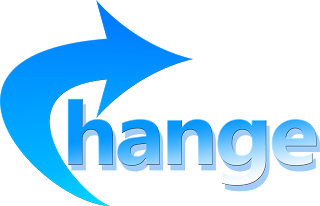 The Monthly Insight: Five Big “WHO”s in Change Management Aug. 2016: Change is inevitable, organizational change has become a common practice within an organization, but too often changes are made as a reaction to outer impulses, crisis, and demands. This is the bureaucracy’s way of meeting the challenges. People, process, technology, WHAT are important factors in Change Management, and pitfalls to avoid, in order to improve the success rate of change initiatives?
The Monthly Insight: Five Big “WHO”s in Change Management Aug. 2016: Change is inevitable, organizational change has become a common practice within an organization, but too often changes are made as a reaction to outer impulses, crisis, and demands. This is the bureaucracy’s way of meeting the challenges. People, process, technology, WHAT are important factors in Change Management, and pitfalls to avoid, in order to improve the success rate of change initiatives?
Blogging is not about writing, but about thinking and innovating the new ideas; it’s not just about WHAT to say, but about WHY to say, and HOW to say it. It reflects the color and shade of your thought patterns, and it indicates the peaks and curves of your thinking waves. Unlike pure entertainment, quality and professional content takes time for digesting, contemplation and engaging, and therefore, it takes the time to attract the "hungry minds" and the "deep souls." It’s the journey to amplify diverse voices and deepen digital footprints, and it's the way to harness your innovative spirit.
Follow us at: @Pearl_Zhu
Published on August 25, 2016 23:18
The “Digitizing Boardroom” Book Introduction Chapter 2: A Strategic Board
 The board is accountable for strategy oversight and responsible for ensuring that the strategy being followed is appropriate for the organization and the environments within which the organization operates. The oversight of business strategy and change agenda are the two places where most boards can add value on, BoDs as top leaders need to have capabilities to think strategically for the business’s long-term prosperity.
The board is accountable for strategy oversight and responsible for ensuring that the strategy being followed is appropriate for the organization and the environments within which the organization operates. The oversight of business strategy and change agenda are the two places where most boards can add value on, BoDs as top leaders need to have capabilities to think strategically for the business’s long-term prosperity.
Strategic BoDs: There is a need for digital leaders such as BoDs who can think strategically and possess curiosity to ask WHY and knowing HOW of what strategic management is. Generally speaking, strategists have a clear vision, can think long term, master at both critical thinking and systems thinking to understand the business context. The power of context is in the way you can change the factors that create a context. Context is multidimensional in terms of understanding the scope - functional and physical, and a third aspect, to assist planning, risk assessment, etc. and to understand the environment in which the “something” will be developed and then operate. BoDs are the digital leaders who can set right priorities, follow the principles such as simplicity, also being learning agile to adapt to changes in the fast-paced digital environment.
BoDs think as “Outliers” to break silo thinking and criticize strategy: The traditional strategy is the view via narrow frames and considerably static timeline, but digital strategy view is broader to oversee business ecosystem, with the emergent property. It is definitely a different beast nowadays, because the speed of change is accelerating, Although the board often delegate the tasks such as strategy making to management. Nowadays, the boards perhaps need spend some time on participating strategy development as well because strategy-execution is a dynamic and iterative digital continuum. Strategy development is too often seen as a linear process, but it is, in fact, a cyclical process that needs constant attention and tuning. A cyclical approach also allows checks and balances and makes it easier to evaluate progress vs reality and business trends, which are moving too quickly to be taken for granted.
 BoDs present strategic wisdom to pinpoint pitfalls in Strategy Management: The strategy is the pillar of organizational existence, its vision, mission, design, structure, and functions. The strategy is no longer a static document file puts on the shelf, but a dynamic roadmap you should keep updating. You always should define a strategy, what the ups and down risks are and if realized, what to change. It is also not a stubbornly inflexible tool, but you must have reasons for change and drive consistent actions out of that change. Reducing barriers and optimizing connections and synergies are always beneficial. A strategic board is able to identify pitfalls on the way, monitor strategy implementation, and advise senior executive teams to overcome them and improve overall strategy management effectiveness.
BoDs present strategic wisdom to pinpoint pitfalls in Strategy Management: The strategy is the pillar of organizational existence, its vision, mission, design, structure, and functions. The strategy is no longer a static document file puts on the shelf, but a dynamic roadmap you should keep updating. You always should define a strategy, what the ups and down risks are and if realized, what to change. It is also not a stubbornly inflexible tool, but you must have reasons for change and drive consistent actions out of that change. Reducing barriers and optimizing connections and synergies are always beneficial. A strategic board is able to identify pitfalls on the way, monitor strategy implementation, and advise senior executive teams to overcome them and improve overall strategy management effectiveness. A strategic board reaches the high level of board maturity. In a world of well-defined problems, directors are required to exercise influence over volatility, manage uncertainty, simplify complexity, and resolve ambiguity in the 21st-century digital environment.
Follow us at: @Pearl_Zhu
Published on August 25, 2016 23:14
Five Digital Capabilities to Improve IT Performance
 IT plays a significant role in building business competency and driving digital transformation. IT needs to continually assess its own capabilities and evaluate overall performance via a set of questions, such as: How to map IT strategy to business strategy? What things are in place that will enable the business strategy? What can be done to strengthen them? What things are in place that will inhibit or endanger the business strategy? What can be done to minimize them? Are the right skills in place? Are projects delivered not just on time, on budget, but more importantly on value? Are costs in line with the long-term plan and short-term goals? How can IT make a continuous delivery of improving its own performance and overall business results?
IT plays a significant role in building business competency and driving digital transformation. IT needs to continually assess its own capabilities and evaluate overall performance via a set of questions, such as: How to map IT strategy to business strategy? What things are in place that will enable the business strategy? What can be done to strengthen them? What things are in place that will inhibit or endanger the business strategy? What can be done to minimize them? Are the right skills in place? Are projects delivered not just on time, on budget, but more importantly on value? Are costs in line with the long-term plan and short-term goals? How can IT make a continuous delivery of improving its own performance and overall business results?
Business optimization: The “reach and range” flexibility that now exists removes barriers that have existed in the past.The lightweight and powerful digital technologies provide businesses great opportunities to break down silos, optimize the business from management, organizational structure, and process management perspective, in order to streamline digital flow, improve customer experience, and enforce cross-functional communication and collaboration. The pervasive digitization requires both business and technology professionals to rethink how things are done in organizations. IT as a conductor to help integrate/optimize/orchestrate business processes to facilitate the business outcome, usually through technology or data in and of itself for the paving. IT role is also to be a facilitator to business processes and 'service broker' to align business strategy and goals with automated solutions.
Decision quality management: Information and decision making are interdependent. information, principally more than data and knowledge alike, carries fundamentally higher entropy than the other two do. The value of IT is providing the right information on demand to make or arrive at a strategic business decision. The information provided should be accurate, precise and relevant so that decision-making process is more successful. Information Management is the complex domain. IT enables a complete “decision quality management” (DQM) life-cycle, also known as the ‘IT OODA’ Observe, Orient, Decide, and Act scenario. IT is the lifeblood to make this decision life-cycle possible.
Innovation: IT should enable business innovation with disciplines and the right tools (such as collaborative platform, analytics tools., etc) at the organizational scope. IT enables business innovation to create a value proposition that would move your prospects to become your clients; more importantly, to improve customer retention. The advent of the SMAC (Social, Mobile, Analytics, Cloud) technologies and the growing increase in IT revenue generating initiatives around the globe. The CIO is also in a unique position to align process, technology, and people, from generating ideas on applying technology and data assets to drive value, the oversight is needed in managing innovation life cycle.
Digital transparency: Digital blurs functional border, territorial border, and even organizational border, transparency becomes the lubricant to bridge IT and business gaps, as well as build trust relationship. If When you are pushed to show transparency, IT usually revert to "look how many hours" not "here is what we delivered." That causes IT to look at efficiency (which is internal), vs. effectiveness (which is external). This combination leads to the transparency side of the fence. Priorities (business Value) are clear and no longer look arbitrary. When IT speaks the business language, credibility increases, and transparency is achieved. Business oriented metrics allow for true discussions of cost/value trade-offs. Technology abundance is not for its own sake, but to solve either business problems or human challenges. Changing the approach shows respect for the business and their work too. Hence, IT plays an important role in interpreting business issues into a technology solution, also, leverage necessary resources to solve them in a transparent way.
 Agility: Agility is the business ability to adapt to changes. Agility plays its part in the business dynamic as a measure of the enterprise's capability to assess, align, adapt and change to innovative launches, which create new avenues for revenue and the defined speed in which to capitalize on those opportunities. When successful, the creation of market demand where none existed previously occurs. The key to that success in today's "instant access culture" is unlocked when IT and business are intrinsically linked, that require agility is a strategy in and of itself. Agile is not just a set of practices, but a leadership philosophy and management approach to leverage resources effectively for building a cohesive portfolio with all right building blocks to implement a capability-based strategy.
Agility: Agility is the business ability to adapt to changes. Agility plays its part in the business dynamic as a measure of the enterprise's capability to assess, align, adapt and change to innovative launches, which create new avenues for revenue and the defined speed in which to capitalize on those opportunities. When successful, the creation of market demand where none existed previously occurs. The key to that success in today's "instant access culture" is unlocked when IT and business are intrinsically linked, that require agility is a strategy in and of itself. Agile is not just a set of practices, but a leadership philosophy and management approach to leverage resources effectively for building a cohesive portfolio with all right building blocks to implement a capability-based strategy.
In order to run IT as a business, besides building the good products and solutions, IT needs to know how to promote its products and services. IT leaders and professionals need to know how to promote their services and solutions like any software company with a product or a service to sell. Running IT as a business means IT understands what’s the customer’s true need, help to solve their problems, but also transform from a cost center into a value center via evaluating IT performance via both effectiveness and efficiency lenses and beyond.
Follow us at: @Pearl_Zhu
Published on August 25, 2016 23:09
August 24, 2016
The “CIO Master” Monthly Book Tuning: Running IT with Differentiated Competency Aug. 2016
Digital IT needs to become more dynamic and innovative to be a pathfinder for the digital transformation.
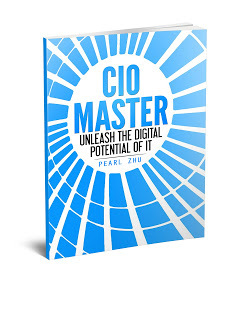 Modern CIOs have many personas and face great challenges. It is not sufficient to only keep the light on. Regardless of which industry or the nature of organization you are in, being a digital leader will need to master the art of creating unique, differentiating value from piles of commoditized technologies, but more specifically, what are the digital-savvy CIOs doing to run IT as a value creator and innovation engine? Here is the monthly “CIO Master” Book Tuning. Running IT with Differentiated Competency Aug. 2016Running a Differentiated IT to Reach the Zenith of Digital Maturity The majority of IT organizations today still limit their role as a support center to keep the lights on. Bottom line thinking is one of the great limitations of modern IT organization. The true ITvalue is hard to derive from support services since measuring productivity can be elusive and difficult to quantify. Also with explosive information flow and disruptive digital technologies, all forward-thinking organizations claim they are in the information management businesses. Hence, IT as an information steward of the business has to be run as a strategic partner and a key differentiator of the company, in order to improve business competency and reach the zenith of digital maturity.
Modern CIOs have many personas and face great challenges. It is not sufficient to only keep the light on. Regardless of which industry or the nature of organization you are in, being a digital leader will need to master the art of creating unique, differentiating value from piles of commoditized technologies, but more specifically, what are the digital-savvy CIOs doing to run IT as a value creator and innovation engine? Here is the monthly “CIO Master” Book Tuning. Running IT with Differentiated Competency Aug. 2016Running a Differentiated IT to Reach the Zenith of Digital Maturity The majority of IT organizations today still limit their role as a support center to keep the lights on. Bottom line thinking is one of the great limitations of modern IT organization. The true ITvalue is hard to derive from support services since measuring productivity can be elusive and difficult to quantify. Also with explosive information flow and disruptive digital technologies, all forward-thinking organizations claim they are in the information management businesses. Hence, IT as an information steward of the business has to be run as a strategic partner and a key differentiator of the company, in order to improve business competency and reach the zenith of digital maturity.
Managing Innovation in a Structural Way”: Digital is the age of innovation. And innovation is what leads to differentiation. There are many ways to differentiate and, therefore, there are many ways to pursue innovation. For many organizations getting stuck at the lower level of maturity, innovation is still a serendipity, with a very low success rate, often the ROI is not proportional to the investment they pour in, and lack of a balanced portfolio to both managing incremental innovations and embracing disruptive innovations. Is there a magic formula to build a highly innovative company and how to manage innovation as a core business capability in a structural way?
 Are Visionary CIOs Often Outliers? Modern CIOs have multiple personas, they have to wear different hats to fit the roles situationally in order to lead effectively. Technology is complex, business is complex, and people are complex. Due to increasing changes in the digital dynamic environment, The CIOs needs to be a dynamic person with vision, open, growth and complexity mindset- with high ability to envision the digital trends, manage innovations, communicating to suite situations so as to craft strategies and make things happen. Visionary CIOs are in demand, and, are visionary Who are they, and what can they do to drive digital transformation of the business.
Are Visionary CIOs Often Outliers? Modern CIOs have multiple personas, they have to wear different hats to fit the roles situationally in order to lead effectively. Technology is complex, business is complex, and people are complex. Due to increasing changes in the digital dynamic environment, The CIOs needs to be a dynamic person with vision, open, growth and complexity mindset- with high ability to envision the digital trends, manage innovations, communicating to suite situations so as to craft strategies and make things happen. Visionary CIOs are in demand, and, are visionary Who are they, and what can they do to drive digital transformation of the business.
Running an “I-Information Driven” IT to Catalyze Business Growth: We live in a technology world and every day more and more technologies affect the way we live, love, and think. Great opportunity, danger, and disruption are around every corner. Hence, IT plays a more crucial role in the organization to optimize and innovate the business, with ultimate goals to push the IT organization to be clear about its position via the company’s core business growth. Here are three aspects of running a “Digital Fit” IT to catalyze business growth and improve overall organizational maturity?
How Responsive Could Digital IT Be? IDigital is all about change with continuous disruptions and exponential information flow, a responsive IT means a lot of things for the business’s digital transformation: speed, innovation, agility, ambidexterity, modernization, intelligence, value creation, and maturity, etc. How responsive could IT be in order to ride learning curves, keep the pace of rapid changes, and accelerate digital transformation of the business?
The “Future of CIO” Blog has reached 1.5 million page views with about #3000th blog posting in 59+ different categories of leadership, management, strategy, digitalization, change/talent, etc. The content richness is not for its own sake, but to convey the vision and share the wisdom. Blogging is not about writing, but about thinking and innovating the new ideas; it’s not just about WHAT to say, but about WHY to say, and HOW to say it. It reflects the color and shade of your thought patterns, and it indicates the peaks and curves of your thinking waves. Unlike pure entertainment, quality and professional content takes time for digesting, contemplation and engaging, and therefore, it takes the time to attract the "hungry minds" and the "deep souls." It’s the journey to amplify diverse voices and deepen digital footprints, and it's the way to harness your innovative spirit.
Follow us at: @Pearl_Zhu
 Modern CIOs have many personas and face great challenges. It is not sufficient to only keep the light on. Regardless of which industry or the nature of organization you are in, being a digital leader will need to master the art of creating unique, differentiating value from piles of commoditized technologies, but more specifically, what are the digital-savvy CIOs doing to run IT as a value creator and innovation engine? Here is the monthly “CIO Master” Book Tuning. Running IT with Differentiated Competency Aug. 2016Running a Differentiated IT to Reach the Zenith of Digital Maturity The majority of IT organizations today still limit their role as a support center to keep the lights on. Bottom line thinking is one of the great limitations of modern IT organization. The true ITvalue is hard to derive from support services since measuring productivity can be elusive and difficult to quantify. Also with explosive information flow and disruptive digital technologies, all forward-thinking organizations claim they are in the information management businesses. Hence, IT as an information steward of the business has to be run as a strategic partner and a key differentiator of the company, in order to improve business competency and reach the zenith of digital maturity.
Modern CIOs have many personas and face great challenges. It is not sufficient to only keep the light on. Regardless of which industry or the nature of organization you are in, being a digital leader will need to master the art of creating unique, differentiating value from piles of commoditized technologies, but more specifically, what are the digital-savvy CIOs doing to run IT as a value creator and innovation engine? Here is the monthly “CIO Master” Book Tuning. Running IT with Differentiated Competency Aug. 2016Running a Differentiated IT to Reach the Zenith of Digital Maturity The majority of IT organizations today still limit their role as a support center to keep the lights on. Bottom line thinking is one of the great limitations of modern IT organization. The true ITvalue is hard to derive from support services since measuring productivity can be elusive and difficult to quantify. Also with explosive information flow and disruptive digital technologies, all forward-thinking organizations claim they are in the information management businesses. Hence, IT as an information steward of the business has to be run as a strategic partner and a key differentiator of the company, in order to improve business competency and reach the zenith of digital maturity.Managing Innovation in a Structural Way”: Digital is the age of innovation. And innovation is what leads to differentiation. There are many ways to differentiate and, therefore, there are many ways to pursue innovation. For many organizations getting stuck at the lower level of maturity, innovation is still a serendipity, with a very low success rate, often the ROI is not proportional to the investment they pour in, and lack of a balanced portfolio to both managing incremental innovations and embracing disruptive innovations. Is there a magic formula to build a highly innovative company and how to manage innovation as a core business capability in a structural way?
 Are Visionary CIOs Often Outliers? Modern CIOs have multiple personas, they have to wear different hats to fit the roles situationally in order to lead effectively. Technology is complex, business is complex, and people are complex. Due to increasing changes in the digital dynamic environment, The CIOs needs to be a dynamic person with vision, open, growth and complexity mindset- with high ability to envision the digital trends, manage innovations, communicating to suite situations so as to craft strategies and make things happen. Visionary CIOs are in demand, and, are visionary Who are they, and what can they do to drive digital transformation of the business.
Are Visionary CIOs Often Outliers? Modern CIOs have multiple personas, they have to wear different hats to fit the roles situationally in order to lead effectively. Technology is complex, business is complex, and people are complex. Due to increasing changes in the digital dynamic environment, The CIOs needs to be a dynamic person with vision, open, growth and complexity mindset- with high ability to envision the digital trends, manage innovations, communicating to suite situations so as to craft strategies and make things happen. Visionary CIOs are in demand, and, are visionary Who are they, and what can they do to drive digital transformation of the business.Running an “I-Information Driven” IT to Catalyze Business Growth: We live in a technology world and every day more and more technologies affect the way we live, love, and think. Great opportunity, danger, and disruption are around every corner. Hence, IT plays a more crucial role in the organization to optimize and innovate the business, with ultimate goals to push the IT organization to be clear about its position via the company’s core business growth. Here are three aspects of running a “Digital Fit” IT to catalyze business growth and improve overall organizational maturity?
How Responsive Could Digital IT Be? IDigital is all about change with continuous disruptions and exponential information flow, a responsive IT means a lot of things for the business’s digital transformation: speed, innovation, agility, ambidexterity, modernization, intelligence, value creation, and maturity, etc. How responsive could IT be in order to ride learning curves, keep the pace of rapid changes, and accelerate digital transformation of the business?
The “Future of CIO” Blog has reached 1.5 million page views with about #3000th blog posting in 59+ different categories of leadership, management, strategy, digitalization, change/talent, etc. The content richness is not for its own sake, but to convey the vision and share the wisdom. Blogging is not about writing, but about thinking and innovating the new ideas; it’s not just about WHAT to say, but about WHY to say, and HOW to say it. It reflects the color and shade of your thought patterns, and it indicates the peaks and curves of your thinking waves. Unlike pure entertainment, quality and professional content takes time for digesting, contemplation and engaging, and therefore, it takes the time to attract the "hungry minds" and the "deep souls." It’s the journey to amplify diverse voices and deepen digital footprints, and it's the way to harness your innovative spirit.
Follow us at: @Pearl_Zhu
Published on August 24, 2016 22:37
The New Book “Digitizing Boardroom” Chapter 1 Preview: Twenty-Three Themes of Digital Boardrooms
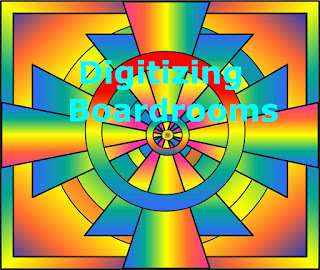 The contemporary corporate boards play important roles in strategy advising, governance oversight, leadership exemplify, culture tuning, and talent management influence, they also have to shift from the industrial mentalities to the digital styles. A professional digital board is not only about filling with cool-headed, high-professional and high-intelligent BoDs, but also about tuning the structured process to digitize itself, optimize decision-making capacity, inspire innovation, and improve the board's overall effectiveness, agility, and maturity.
The contemporary corporate boards play important roles in strategy advising, governance oversight, leadership exemplify, culture tuning, and talent management influence, they also have to shift from the industrial mentalities to the digital styles. A professional digital board is not only about filling with cool-headed, high-professional and high-intelligent BoDs, but also about tuning the structured process to digitize itself, optimize decision-making capacity, inspire innovation, and improve the board's overall effectiveness, agility, and maturity.
Digital Visionary Board: Vision is an integral part of the directorial role. A visionary board can navigate to the deep digital reality and lead the business toward the right direction. Vision doesn’t have to be exclusive or externally focused. In most cases, it must be a shared, collaborative vision, because the board of directors which is responsible for setting the vision for the enterprise is a plurality, not an individual. BoD leadership vision is to serve as a future shaper and strategy enabler, to clear the path, whether that be the elimination of obstacles or to provide coaching and guidance. BoD leadership needs to be future oriented. Leaders with the visionary mind have the ability to think the past, perceive what is now and foresee the future. Visionary BoDs can explore the vision and fresh ideas in a spirit of open-mindedness, learning, and respect.
Digital Fitting Board: The digital fitting BoD is about mental toughness, with fitting minds and fresh eyes. Every decision requires a different way of thinking. The best fit for the board depends on the Board’s current makeup and culture, as well as which gap needs to be filled. Every fitting board needs individuals who can think outside the box with “fresh eyes,” and “inquisitive mind.” Choosing someone based on only one criterion may limit the board. There is a need for both generalists who can give an overview and specialists who can “drill down” into specific topics. Overall speaking, the digital fit starts with mind fit. BoDs and top leadership teams make a significant influence on shaping the digital mindset, it requires that you move from mind SET to mind FLOW, from fixed mind to growth mind, with the purpose to build a high-performing board and direct the organization towards the digital journey with a clear vision, strong strategy, solid roadmap and effective oversight.
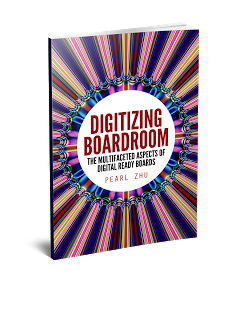 A Tech-Savvy Board: Based on the variety of industry surveys, the majority of BoDs think IT is critical to their companies, and forward-looking organizations cross-sector claim that they are at the information businesses because IT touches every facet of businesses today, and IT becomes part of the overall business strategy. Therefore, to oversee strategy effectively, Boards can no longer avoid, delegate, or ignore the need for technology competency amongst their ranks. More and more foresightful Boards also invite IT leaders at the boardroom. Directors are particularly involved in overseeing and understanding more traditional IT issues, such as the status of major IT project implementations and their companies’ annual IT budgets, as well as overseeing and understanding risks related to compromising customer data. Because information is the gold mine of the business and technology is the disruptive force behind business innovation. Innovation is increasingly technology dependent, the role of Board is to help and encourage senior management team to set an innovation climate that is sustainable and drives future growth.
A Tech-Savvy Board: Based on the variety of industry surveys, the majority of BoDs think IT is critical to their companies, and forward-looking organizations cross-sector claim that they are at the information businesses because IT touches every facet of businesses today, and IT becomes part of the overall business strategy. Therefore, to oversee strategy effectively, Boards can no longer avoid, delegate, or ignore the need for technology competency amongst their ranks. More and more foresightful Boards also invite IT leaders at the boardroom. Directors are particularly involved in overseeing and understanding more traditional IT issues, such as the status of major IT project implementations and their companies’ annual IT budgets, as well as overseeing and understanding risks related to compromising customer data. Because information is the gold mine of the business and technology is the disruptive force behind business innovation. Innovation is increasingly technology dependent, the role of Board is to help and encourage senior management team to set an innovation climate that is sustainable and drives future growth.
…..There are many other digital themes of Boardrooms are described in the book.
The board needs diversity, or even more precisely, cognitive difference, to provide a perspective that goes beyond the gaps in board discussions. The BoDs need to incorporate their unique viewpoint on people, innovation, insight into their solid knowledge of overall business and technology. The high-quality Board leadership has the very characteristics such as multi-dimensional intelligence, openness, and wisdom.Follow us at: @Pearl_Zhu
Published on August 24, 2016 22:31



